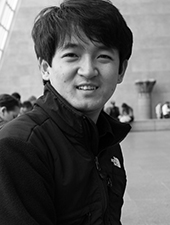Trivedi, Gaurang, Inoue, Daichi, Chen, Cynthia, Bitner, Lillian, Chung, Young Rock, Taylor, Justin, Gönen, Mithat, Wess, Jürgen, Abdel-Wahab, Omar, Zhang, Lingbo (2019) Muscarinic acetylcholine receptor regulates self-renewal of early erythroid progenitors. Science Translational Medicine, 11 (511).
Abstract
By studying red blood cell precursors and their self-renewal mechanisms, Trivedi et al. identified a potential approach to helping relieve multiple types of anemia. The authors specifically focused on burst-forming unit erythroid, a type of early erythroid progenitor, showing that a specific acetylcholine receptor called cholinergic receptor, muscarinic 4 (CHRM4) regulates the self-renewal of these progenitor cells. Genetic or pharmacologic inhibition of CHRM4 increased erythrocyte production and alleviated anemia in a variety of mouse models, suggesting the therapeutic potential of this approach.Adult stem and progenitor cells are uniquely capable of self-renewal, and targeting this process represents a potential therapeutic opportunity. The early erythroid progenitor, burst-forming unit erythroid (BFU-E), has substantial self-renewal potential and serves as a key cell type for the treatment of anemias. However, our understanding of mechanisms underlying BFU-E self-renewal is extremely limited. Here, we found that the muscarinic acetylcholine receptor, cholinergic receptor, muscarinic 4 (CHRM4), pathway regulates BFU-E self-renewal and that pharmacological inhibition of CHRM4 corrects anemias of myelodysplastic syndrome (MDS), aging, and hemolysis. Genetic down-regulation of CHRM4 or pharmacologic inhibition of CHRM4 using the selective antagonist PD102807 promoted BFU-E self-renewal, whereas deletion of Chrm4 increased erythroid cell production under stress conditions in vivo. Moreover, muscarinic acetylcholine receptor antagonists corrected anemias in mouse models of MDS, aging, and hemolysis in vivo, extending the survival of mice with MDS relative to that of controls. The effects of muscarinic receptor antagonism on promoting expansion of BFU-Es were mediated by cyclic AMP induction of the transcription factor CREB, whose targets up-regulated key regulators of BFU-E self-renewal. On the basis of these data, we propose a model of hematopoietic progenitor self-renewal through a cholinergic-mediated “hematopoietic reflex” and identify muscarinic acetylcholine receptor antagonists as potential therapies for anemias associated with MDS, aging, and hemolysis.
Actions (login required)
 |
Administrator's edit/view item |


